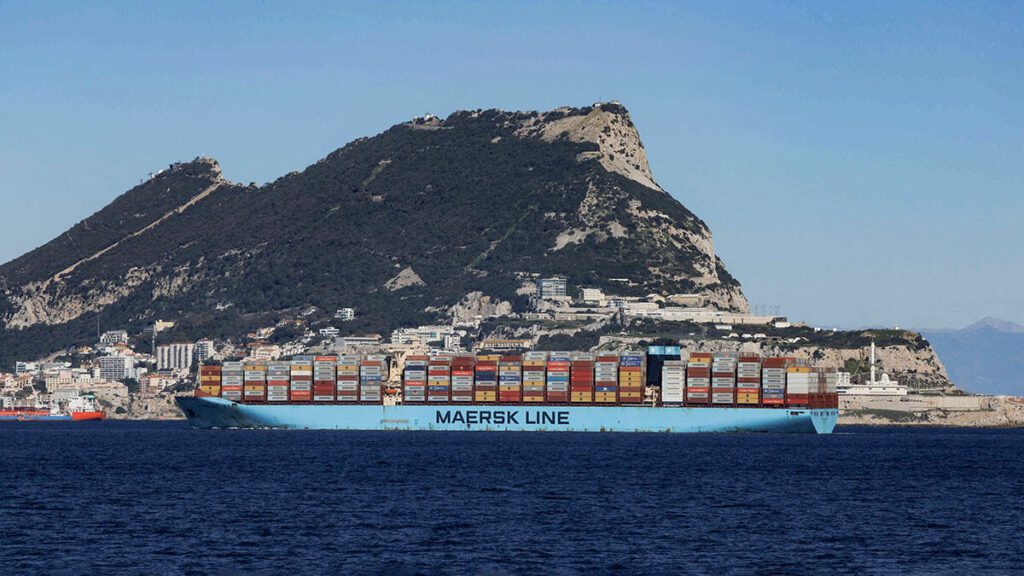The Gibraltar tunnel megaproject that would link Spain with Morocco – in turn connecting Europe with Africa – is gaining momentum thanks to the 2030 FIFA World Cup. This sporting competition, which will mark the centenary of the World Cup, will be hosted for the first time by three countries from two continents: Spain, Morocco and Portugal.
The Gibraltar tunnel, which will facilitate the movement of people and goods between Europe and Africa, would also allow fans to travel between these countries to watch the games more quickly and efficiently.
Forbes magazine says there is a good chance you could hop on a high-speed train in Madrid and travel from Spain to the Moroccan city of Casablanca in five and a half hours through a new tunnel under the Strait of Gibraltar. All this, it points out, in little more than five years. The prestigious American newspaper also describes the tunnel as “an inventive, imaginative and exciting project that seems to have a good chance of success”.
Spain and Morocco first considered the project in 1979 and even developed feasibility studies in 1981. In recent months, the Gibraltar tunnel has once again been at the centre of relations between Rabat and Madrid, linking it in turn to the 2030 World Cup.
The heads of the Moroccan Football Federation Faouzi Lakjaa (C), Spain’s Pedro Rocha (L) and Portugal’s Fernando Gomes – PHOTO/AFP
The Moroccan National Society for Strait Studies (SNED) has announced that it has begun investigating the feasibility of the project, called the ‘Euro-Africa Gibraltar Straight Fixed Link’. Spain, for its part, initiated these studies in 2023 under the auspices of the Spanish Society for Fixed Communications Studies in the Strait of Gibraltar (SECEGSA).
This plan experienced a major boost after Morocco completed its first high-speed rail project connecting Casablanca to Tangier. The Al Boraq train is not only the fastest on the African continent, but also demonstrated that the North African country has the capacity to develop another major rail project.
The Strait of Gibraltar separates the European and African continents by only 14 kilometres. It is envisaged that this tunnel could reduce the travel time from Madrid to Casablanca to just five and a half hours, a significant improvement on the current 12-hour journey by car and ferry or the two-hour flight, the latter much longer if travel time to and from airports is taken into account.
Moroccan high-speed train Al Boraq- PHOTO/ATALAYAR
Departing from Madrid, this train would call at the Spanish city of Algeciras, at the southern tip of the Iberian peninsula, near the Strait of Gibraltar. The train would then head for a tunnel under the Strait, between Punta Paloma in Spain and Punta Malabata in Morocco. Its next stop would be the city of Tangier in Morocco before reaching its final destination, Casablanca.
Between Algeciras and Tangier, the distance would be about 42 kilometres, with 27 kilometres of track in the underwater tunnel. At its lowest point, the tunnel would be some 470 metres below sea level, with a maximum gradient of approximately 3%.
This would be the first rail link between the two continents and, apart from all the World Cup-related benefits, it would connect existing rail routes in both countries and open up new ones. SECEGSA also suggests that it could carry up to 12.8 million passengers between continents annually.
Although construction costs are unknown, the project is estimated to be worth between 7 and 8 billion dollars. Funding is expected to come from the host countries, Spain and Morocco, with additional support from sources such as the European Union.
Read more
Source link : https://www.atalayar.com/en/articulo/economy-and-business/2030-world-cup-boosts-gibraltar-tunnel-project/20240628061000201988.amp.html
Author :
Publish date : 2024-06-28 00:10:00
Copyright for syndicated content belongs to the linked Source.
